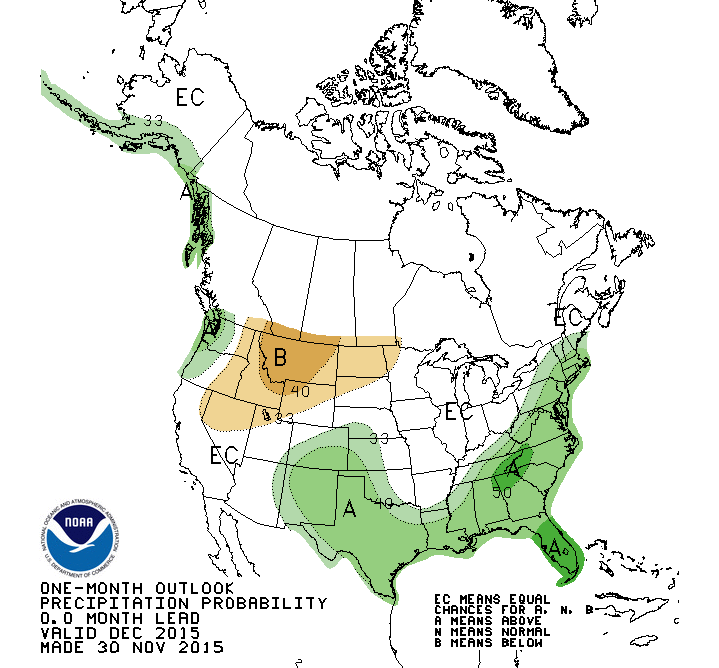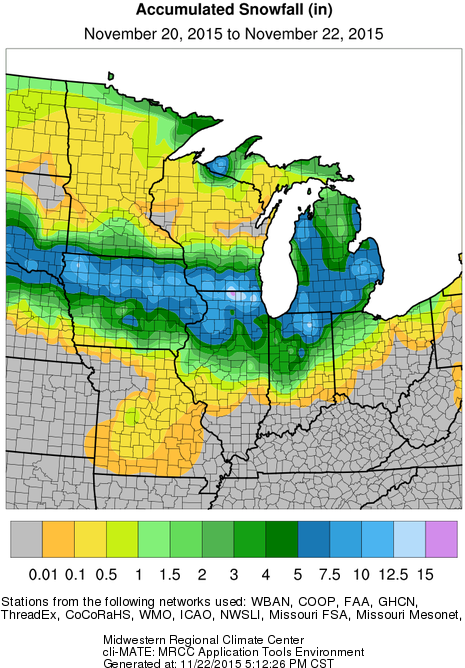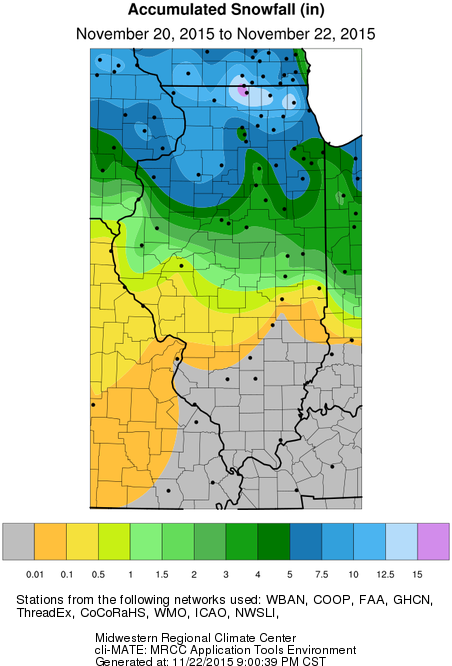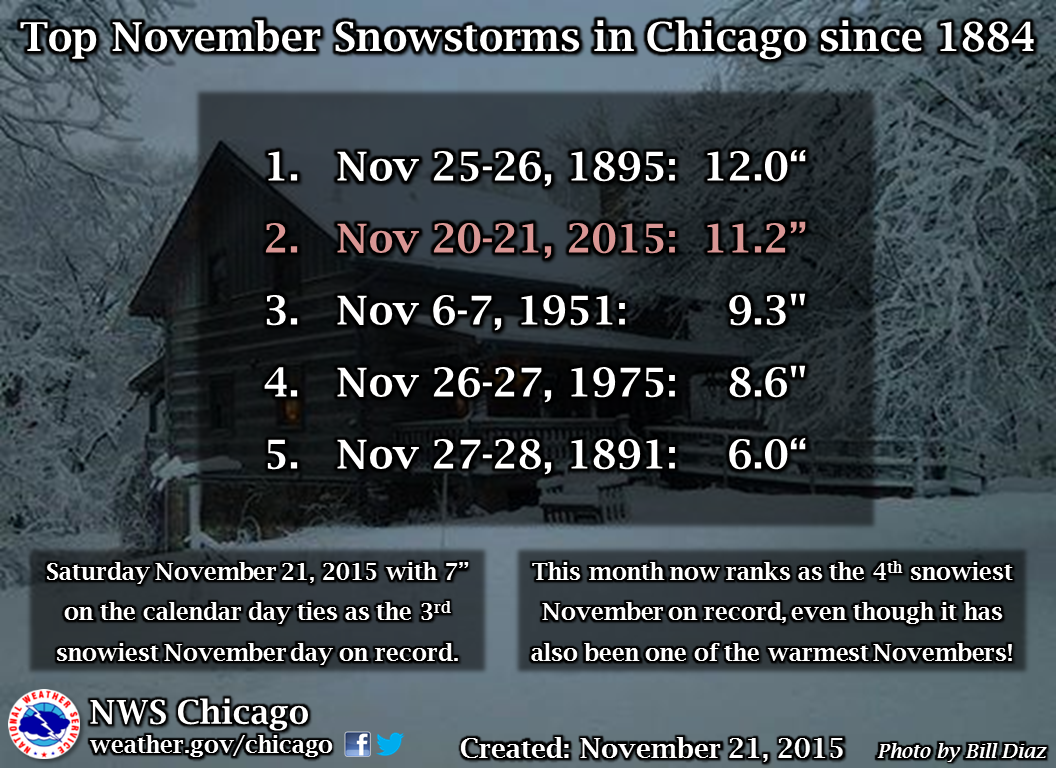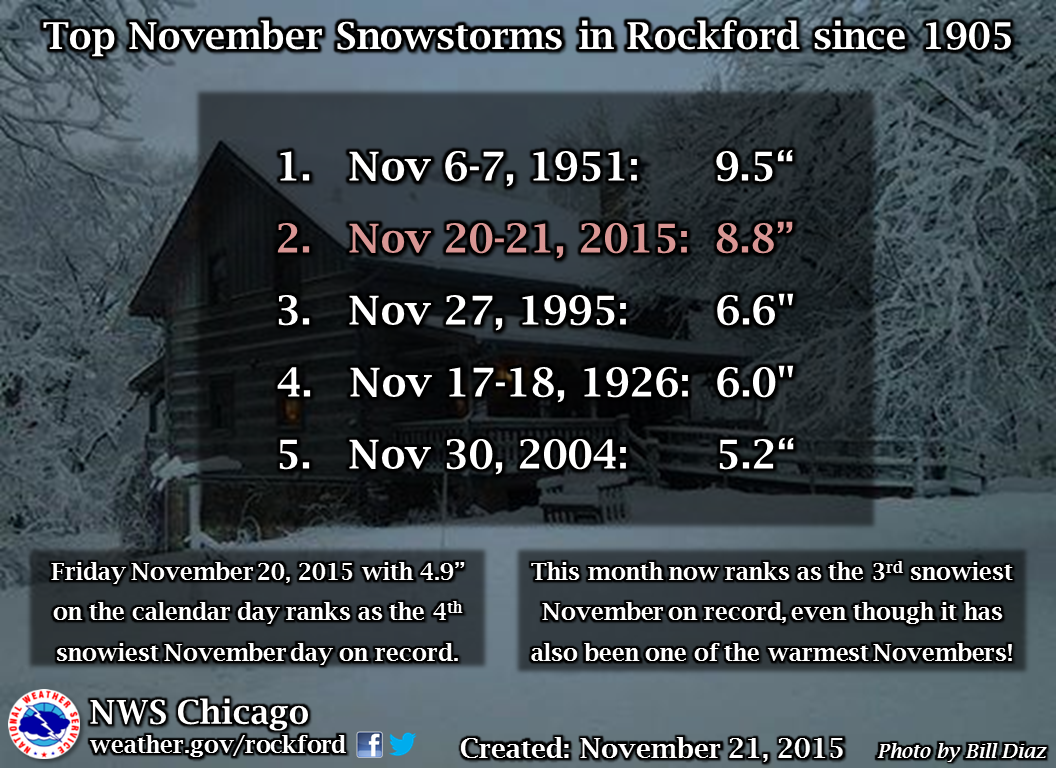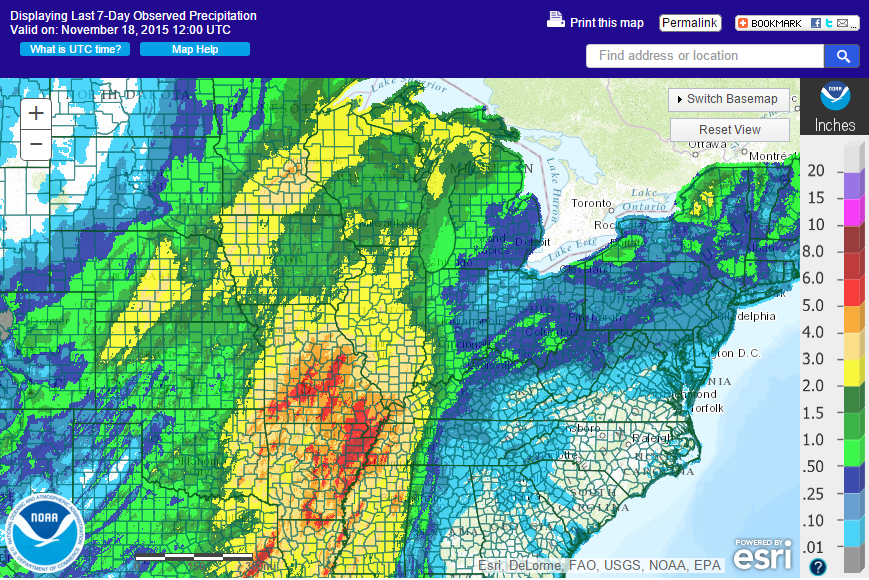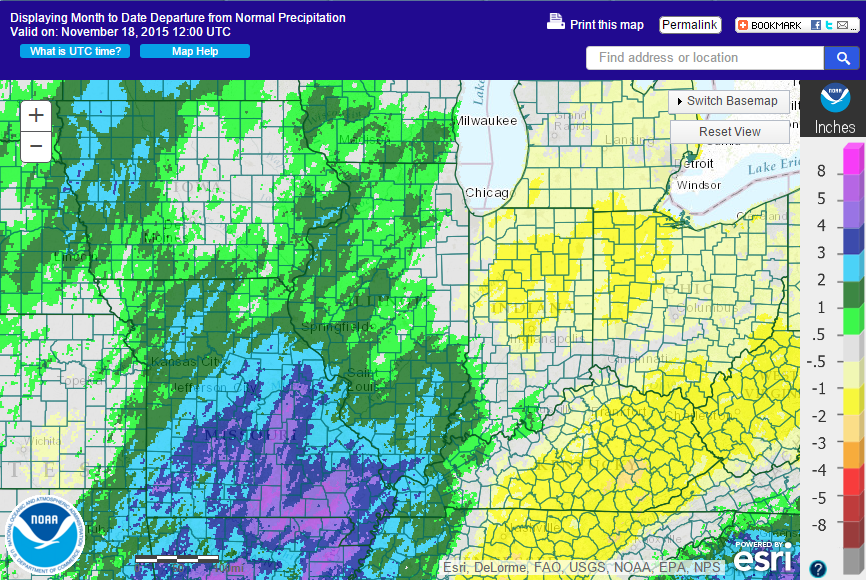The NWS released their latest forecast for December and it is calling for very strong odds of a warmer-than-average December for Illinois and a large portion of the United States. They put the chances at 70 percent or higher in northern Illinois and the Great Lakes region. The odds are between 60 and 70 percent for the rest of Illinois. Those are about the strongest odds that I have ever seen in a monthly forecast.
This forecast for December is strongly supported by the various forecasts out to 14 days, which are also calling for very strong chances of above-average temperatures.
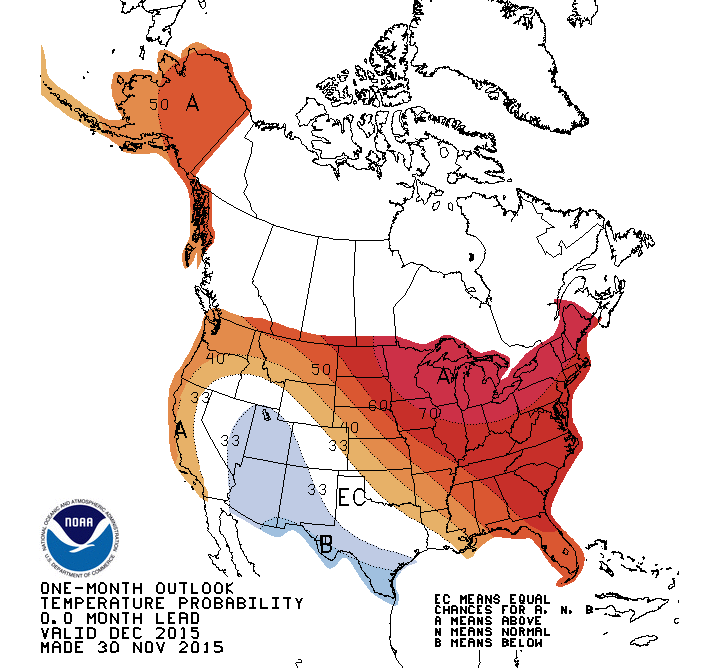
The precipitation forecast is not as striking – increased odds of wetter-than-average conditions in the south and along the East Coast. That’s a classic El Niño precipitation pattern in winter months for those regions.
